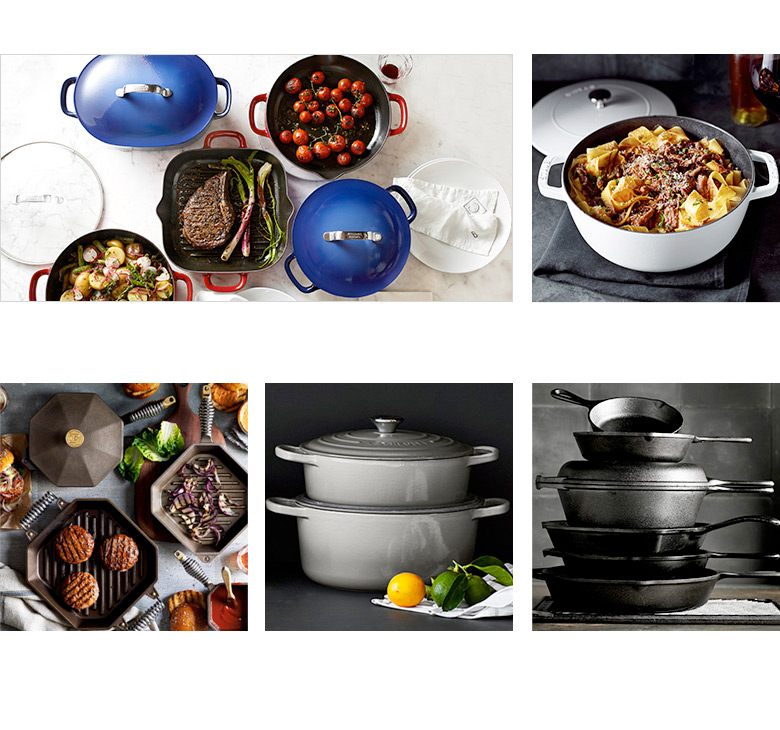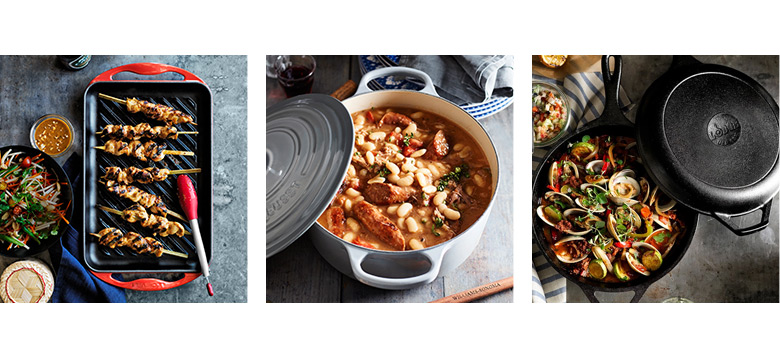The Complete
Guide toCast Iron
Cast Iron vs. Enameled Cast Iron: What Should You Buy?
Cast iron comes in two basic varieties: traditional, which needs to be seasoned, and enameled, which does not. Both have benefits. Traditional cast iron is less costly and lasts indefinitely, but it needs to be properly cleaned and seasoned.
(Some traditional cast-iron brands like Lodge and Finex come preseasoned for a finish that resists sticking and rust.) Enamel-coated cast iron is more expensive, but it doesn't require seasoning, and its surface won't react to acidic foods such as citrus-based sauces. There's no winner; it all comes down to personal preference.
Q & A: Caring for Cast Iron
Advice from Williams Sonoma cookware expert Katie Roberts on how to store, season and clean your cast iron with ease.
Cleaning
Q. What is the proper way
to clean cast iron?
A. After cooking, allow your cast iron to cool (never cover a scalding hot pan in water; it can crack). Clean it thoroughly by scrubbing it with hot water and a nylon brush; avoid using soaps and detergents. Whatever you do, don’t leave it to soak in the sink!
Seasoning
Q. How should you season
cast iron so it becomes more
nonstick over time?
A. Season by heating it over a stovetop to dry, then use a towel to apply a thin coat of oil, and pop it into a 350°F oven for an hour. Turn the oven off and allow the pan to cool in the oven.
Storing
Q. How do you store cast
iron so it doesn’t get rusty?
A. Make sure it’s cleaned, completely dry, seasoned and cooled before stowing it away in a cool, dry place.

Explore Our Cast-Iron Collections
Williams Sonoma Cast Iron
Affordable enamelware created in partnership with Staub.
Shop the Collection >












